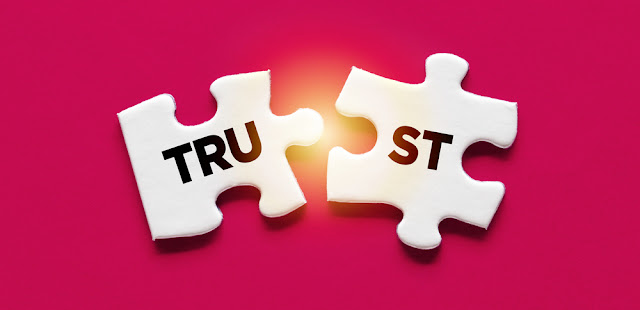Cranes in the Sky: Why Wellness Belongs on Every Leadership Scorecard
Three weeks after my son passed away, I went back to work.
At the time, I thought it was the right decision. If I kept moving, maybe I would not have to feel the weight of the loss. If I stayed busy, maybe I could keep the grief at bay. But the truth is I was not okay. My leadership was not steady, because I was not steady. I could barely take care of myself, let alone take care of others. I showed up in the meetings. I checked off the tasks. But I was not really present.
That experience taught me something I will never forget. You cannot lead well if you are not well. And yet, wellness is rarely seen as a leadership skill. Executive presence? Of course. Strategic thinking? Absolutely. Communication? Always. But wellness? That gets treated like an optional add-on, not a core competency.
Which is why Cranes in the Sky by Solange has been on repeat in my mind.
Solange names what so many of us do. We try to bury the weight instead of facing it. But the cranes do not leave. They hover, a skyline full of reminders that you are not okay.
Leaders do this too. They grind harder. They tell their teams to push through. They pretend their cracks are not showing. But avoidance does not make the cranes disappear. It just makes them heavier.
Here are three lessons from Cranes in the Sky that can reshape the way we think about wellness and leadership.
1. Stop Trying to Work It Away
“I tried to work it away.”
Solange names the trap so many leaders fall into, trying to out-hustle their own pain. Adding hours does not lighten the load. It just buries it under more exhaustion. Grind culture may look productive on the surface, but it quietly drains creativity, energy, and trust.
What to do:
- Build “white space” into your team calendar: a recurring hour each week where no meetings or deliverables are scheduled, giving space for pause and recovery.
- Create digital agreements like “no emails after 7pm” or “no Slack pings on weekends” so boundaries are normalized across the team.
- Publicly celebrate balance by recognizing people who actually use their time off, showing that rest is valued, not penalized.
The Lesson: Productivity without wellness is just burnout in disguise. Real leadership is showing your team that rest is strategy, not weakness.
🎤 Mic drop moment: Stop glorifying the grind. A rested leader makes a stronger leader.
2. Call Out the Cranes That Weigh You Down
“I tried to sleep it away.”
Avoidance is tempting. Leaders hope that if they do not name toxic behaviors, unrealistic workloads, or unsafe environments, maybe they will just fade. But silence does not make stress disappear. It multiplies it. Problems that stay unspoken become part of the culture.
What to do:
- Add a standing “What’s feeling heavy this week?” question to your team check-ins so stressors are named openly.
- Use anonymous pulse checks to spot hidden cranes and address trends before they grow heavier.
- Share your own “crane” as a leader, signaling that naming struggles is safe (for example, “My crane this week is feeling spread too thin, so I want us to realign priorities.”).
The Lesson: Leaders who ignore the cranes let them take over the sky. Naming stressors is the first step in lightening the load.
🎤 Mic drop moment: Problems you do not address do not vanish. They recruit reinforcements.
3. Put Wellness on the Scorecard
“I tried to drink it away.”
The lyric is about escape, but the bigger leadership failure is not only personal avoidance. It is organizational neglect. Wellness is still treated like a perk or a program. Rarely is it embedded as a skill leaders are expected to model and be held accountable for. That has to change.
What to do:
- Use your influence to advocate for wellness to be added to leadership competencies and scorecards.
- Bring data from your team’s engagement, retention, or well-being surveys to senior leaders to show why it matters.
- Speak up in succession planning or talent calibration discussions about the importance of evaluating leaders on how they support psychological safety and boundaries.
The Lesson: You may not control the system, but you can advocate to change it. Wellness belongs on the scorecard, and leaders have a responsibility to keep raising the issue until it is measured alongside communication, strategy, and results.
🎤 Mic drop moment: Until wellness is measured, it will always be minimized. Leaders cannot stay silent about that.
Final Thoughts
When I rushed back to work after my son’s death, I thought productivity would protect me. It did not. Solange reminds us in Cranes in the Sky that you cannot work it away, sleep it away, or drink it away. Leaders who try to escape only multiply the weight for themselves and their teams.
Wellness is not a perk. It is not extra. It is not optional. It is leadership. And it belongs on the scorecard.
Leaders who embrace wellness will see lighter skies. Leaders who do not will find the cranes stacking higher, blocking out the light.
🎶 TL;DR
- Productivity without wellness is just burnout in disguise. Rest is strategy, not weakness.
- Stressors you ignore do not vanish. They multiply. Leaders must call out the cranes.
- Until wellness is measured, it will always be minimized. Leaders must advocate to put it on the scorecard.



Comments
Post a Comment